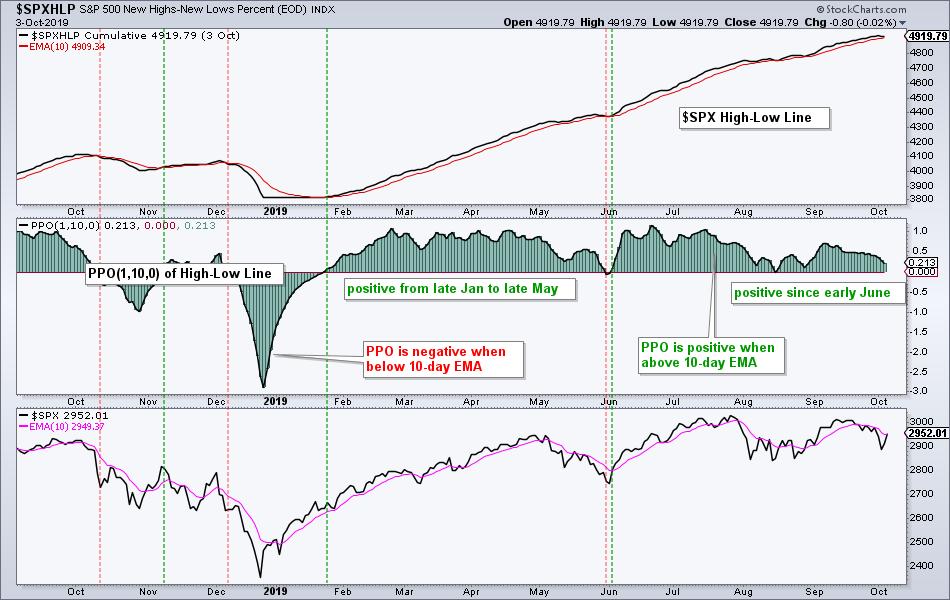 Today we are going to show how 52-week highs and lows can be used to track long-term and short-term trends in the S&P 500. Full disclosure: this is not the holy grail. It is one indicator that can be used in conjunction with others to keep you on the right side of the trend.
Today we are going to show how 52-week highs and lows can be used to track long-term and short-term trends in the S&P 500. Full disclosure: this is not the holy grail. It is one indicator that can be used in conjunction with others to keep you on the right side of the trend.
52-week highs and lows are exceptional. A stock recording a 52-week high is clearly in a strong uptrend and clearly a leader. These stocks are worth counting because they contribute to broad market strength. On the other side, a stock recording a 52-week low is clearly in a strong downtrend and a laggard. Stocks in strong downtrends detract from broad market strength.
Now we need to measure "net strength" using High-Low Percent. This indicator shows net new highs (new highs less new lows) as a percentage of total issues. The chart below shows new highs and new lows for the S&P 500 in the middle window and High-Low Percent in the lower window.

As part of my Index Breadth Model, I consider a move above +10% as bullish and a move below -10% as bearish. A move above +10% shows enough "net strength" to give the bulls a clear edge, while a move below -10% gives the bears a clear edge. This indicator has been bullish since February and it would take a move below -10% to trigger bearish.
For shorter swings, chartists can apply the PPO to the High-Low Line. Like the Advance-Decline Line, this indicator is a cumulative measure of High-Low Percent. The chart below shows the High-Low Line with the 10-day EMA in the top window, the PPO of the High-Low Line and the S&P 500. The PPO(1,10,0) turns positive when the High-Low Line moves above its 10-day EMA (rising) and negative when the High-Low Line moves below its 10-day EMA.

The red and green lines mark the crosses over the past year. The PPO turned positive in early June and remains positive. Except for a short whipsaw in May-June, this line has been pretty much rising since late January. Chartists looking for an early warning signal from the S&P 500 can watch this indicator. A move below zero would signal an expansion of new lows (strong downtrends) and this would be negative for the S&P 500.
Note that these charts show Thursday's values for new highs and new lows. Simply click on the charts to open a link to a live chart with Friday's data.
Choose a Strategy, Develop a Plan and Follow a Process
Arthur Hill, CMT
Chief Technical Strategist, TrendInvestorPro.com
Author, Define the Trend and Trade the Trend
Want to stay up to date with Arthur's latest market insights?
– Follow @ArthurHill on Twitter






